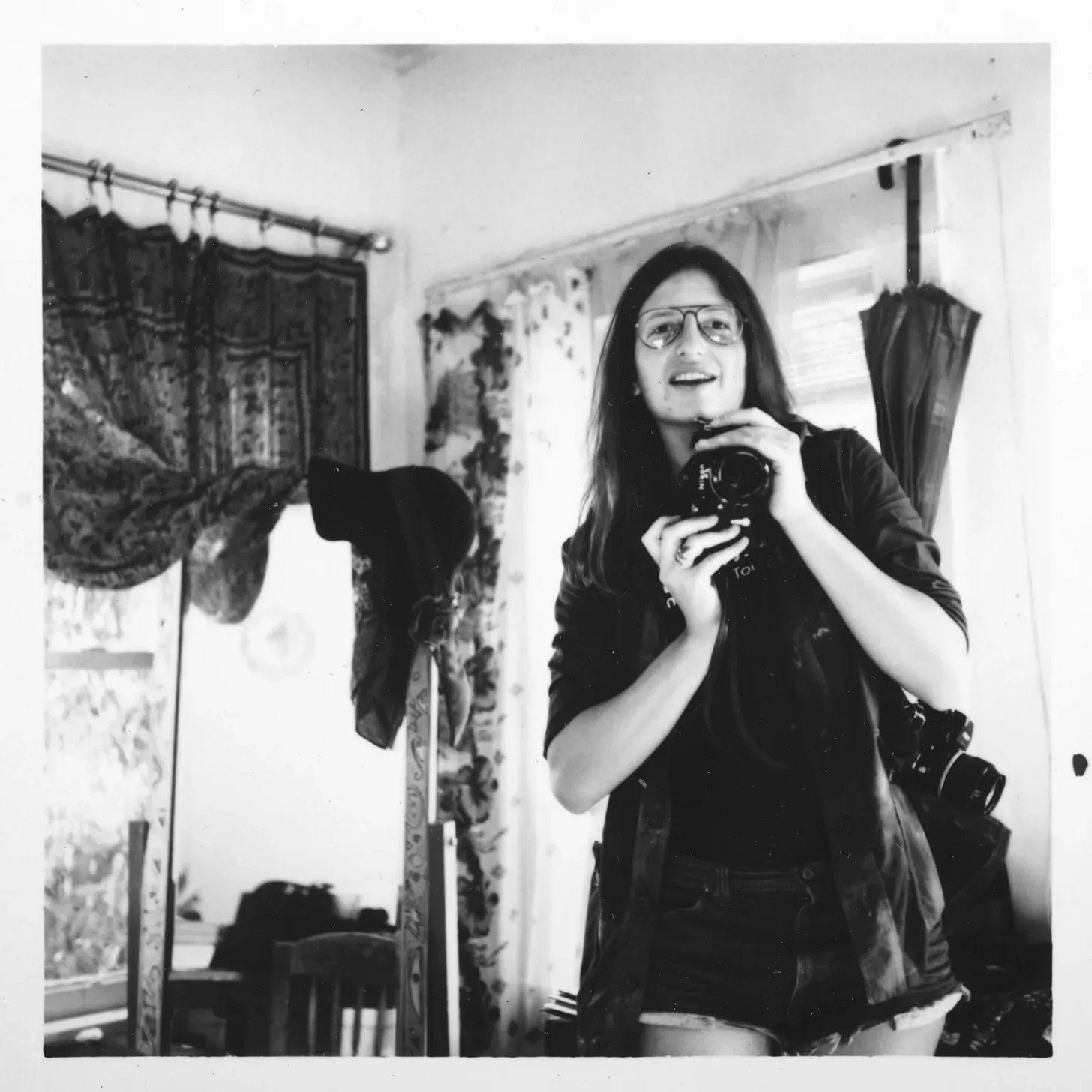Last month, I read Lili Anolik’s Didion & Babitz and was thrilled to find out that Eve Babitz had relationships with women.
I never considered Eve’s sexuality, as she was so famously into men that I overlooked the obvious — she craved attention as much as she did sex. Like Janis Joplin, she loved to be loved, and she found women to be great lovers. In Eve’s case, she at least had a few of them, including Annie Leibovitz, with whom she had a “sustained” relationship, though not at all exclusive. Monogamy wasn’t Eve’s style.
Didion & Babitz is obviously about Eve’s frenemy-style relationship with Joan Didion (straight!), but I’ve found it fun imagining Annie Leibovitz moving from Eve to (20 years and surely some additional girlfriends later) Susan Sontag.
There’s a 10-year age difference between Eve and Susan, and while they were both contributing greatly to American culture in the same era, they couldn’t appear to be more different. Eve was seen as a whimsically eccentric and well-connected groupie whose creative non-fiction wasn’t prized until a late-in-life renaissance, by which time she’d retired and become a Republican hoarder. Susan was a serious intellectual who struggled with private demons — fearless in some ways while scared shitless in others. She was less rock ‘n roll than Eve, who was up for any experience at least once. Susan was international; Eve was local. Susan wrote from being a bystander while it was truly All About Eve in Babitz-land. With her over-the-top antics, sex positivity and 36DDs, Eve was the living embodiment of camp that Susan described in her famous essay. Both women had definitive styles and contributed to Vogue — Susan on the fashion photography of Richard Avedon in 1978 and Eve, in 1992, on the revival of the Haight-Ashbury hippie style she propagated in her heyday.
Like Joan and Eve, Susan spent time in L.A., graduating from North Hollywood High School in 1949. But then she went up to Berkley, checking out the gay bars of San Francisco while Eve was still playing hooky in junior high. Susan continued as an academic while Eve skipped out on city college after a year and a half, partying and shooting press photos of hip pals like Dan Wakefield and Gram Parsons, befriending Julian Wasser and Jim Morrison. These two connections she shared with Joan Didion — quite literally for the latter, as Eve brought Joan to the studio for a Doors recording session that made it into The White Album. (Lili’s book thankfully credits Eve for that in writing — Joan never did.)
Keep reading with a 7-day free trial
Subscribe to LIT FEMME to keep reading this post and get 7 days of free access to the full post archives.




